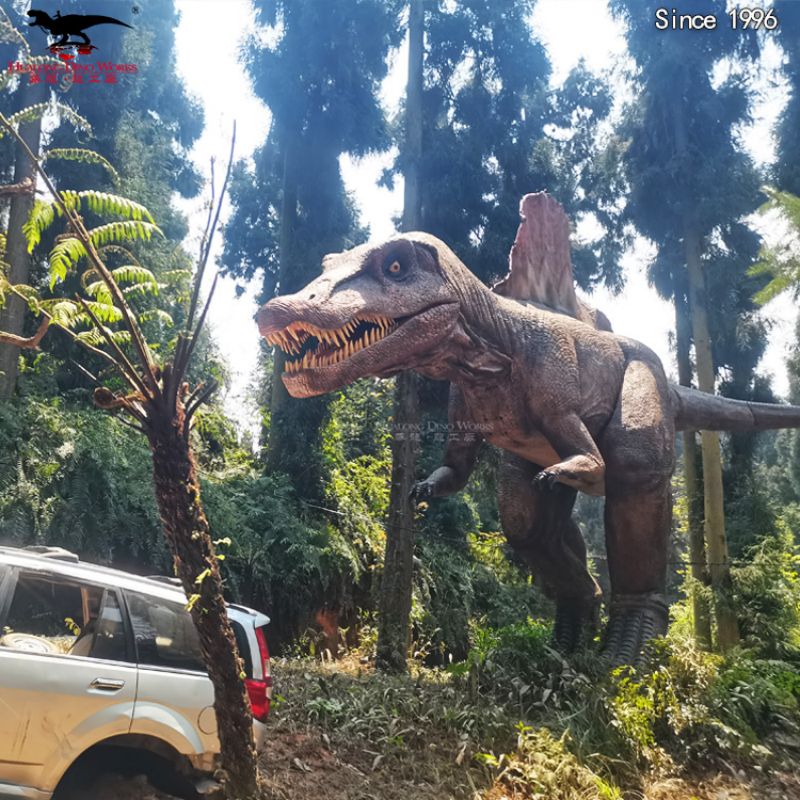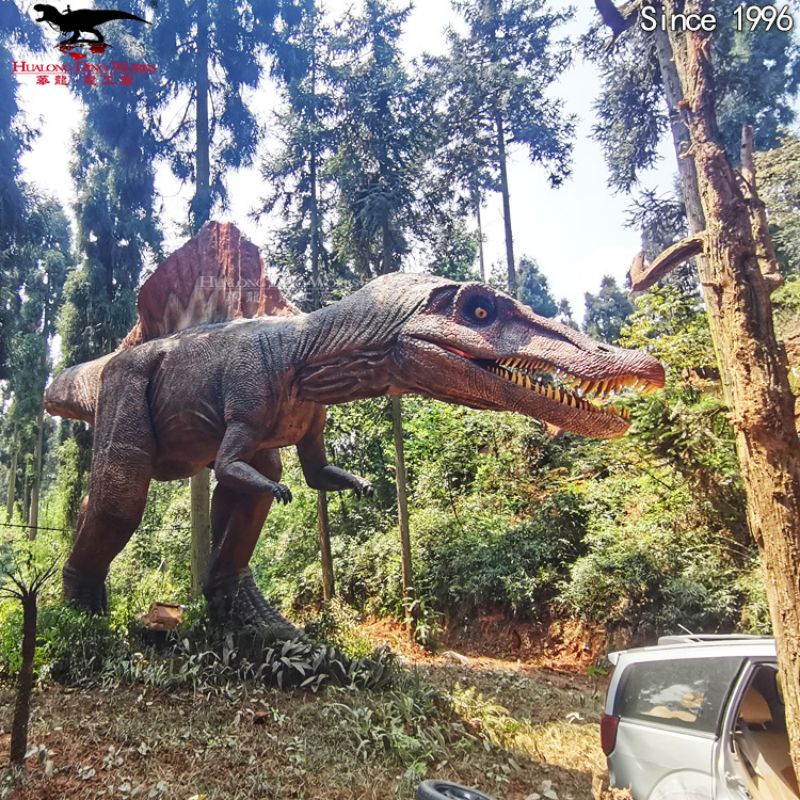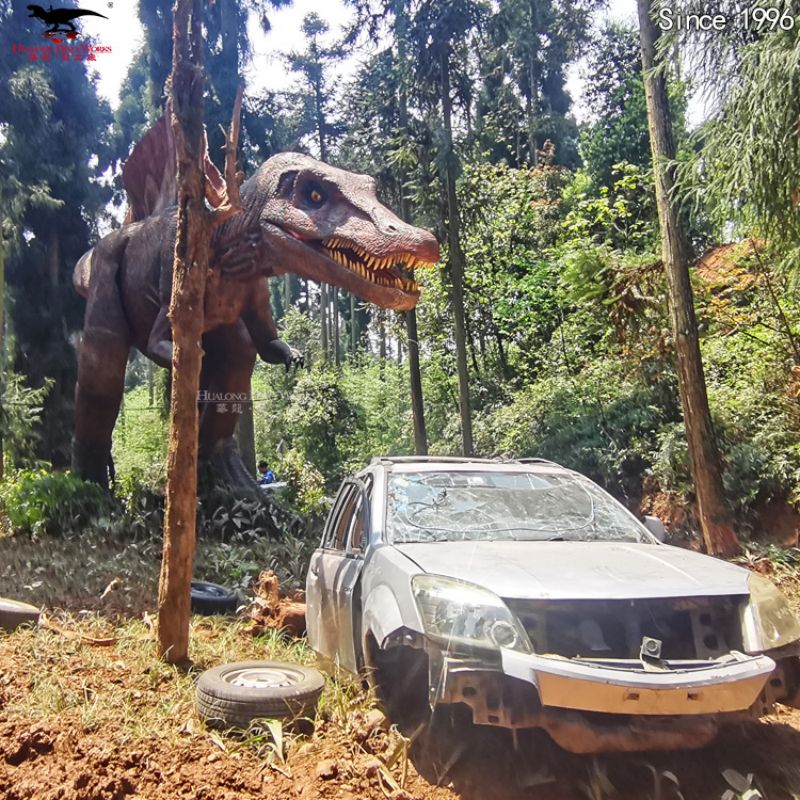
 :86-18808228882
:86-18808228882 :hlys@zghualong.com
:hlys@zghualong.com
16 Meters Animatronic Spinosaurus Attack A Car In Adventure Park
Product introduction
Hualong Science and Technology Co. Ltd. has unveiled a groundbreaking attraction in the realm of adventure parks: a colossal 16-meter animatronic Spinosaurus that engages in thrilling encounters with cars. This larger-than-life creation promises visitors an unforgettable experience, blending awe-inspiring realism with heart-pounding excitement.
The animatronic Spinosaurus, meticulously crafted by Hualong's innovative team, boasts lifelike movements, roaring sounds, and an imposing presence that mirrors the ancient predator's ferocity. Positioned as an interactive spectacle, the dinosaur's simulated attacks on cars create a sense of danger and adventure, transporting guests to a prehistoric world where survival instincts reign supreme.



Designed not only for entertainment but also for educational enrichment, Hualong's animatronic Spinosaurus allows park visitors to delve into the fascinating world of dinosaurs. Its massive size and realistic features serve as a testament to the company's commitment to pushing the boundaries of animatronic technology, delivering an immersive experience that captivates audiences of all ages.
For adventure park operators seeking to elevate visitor experiences, Hualong's 16-meter animatronic Spinosaurus represents a monumental drawcard. By blending scientific accuracy with thrilling narrative, this attraction sets a new standard for immersive entertainment, promising thrills, learning, and unforgettable memories for all who dare to embark on this prehistoric adventure.
Product specification
| Product name | 16 Meters Animatronic Spinosaurus attack a car in adventure park |
| Weight | 16M about 2200KG, depends on the size |
Movement
1. Eyes blink
2. Mouth open and close with synchronized roaring sound
3. Head moving
4. Foreleg moving
5. Body up and down
6. Tail wave


Sound
1. Dinosaur voice
2. Customized other sound
Conventional motors and control parts
1. Eyes
2. Mouth
3. Head
4. Claw
5. Body
6. Tail
Video
ABOUT Spinosaurus
Spinosaurus, the iconic predator of the Cretaceous period, has captured the imagination of scientists and dinosaur enthusiasts alike since its discovery. Known for its distinctive sail-like structure on its back, Spinosaurus is believed to have roamed the ancient river systems of North Africa around 95 million years ago.
One of the largest known carnivorous dinosaurs, Spinosaurus rivaled the Tyrannosaurus rex in size, with some estimates suggesting it could reach lengths of up to 50 feet or more. Its skull was long and narrow, reminiscent of a crocodile's, housing conical teeth perfect for catching fish and possibly even hunting small terrestrial prey.
The most striking feature of Spinosaurus is its sail, formed by elongated neural spines connected by skin. The purpose of this sail has been debated, with theories ranging from thermoregulation to display for mating rituals or species recognition. Recent studies suggest it could have functioned similarly to a modern sailfish, aiding in agility and maneuverability while swimming through water.


Spinosaurus was uniquely adapted for an aquatic lifestyle, possessing paddle-like feet and dense bones that likely helped it stay buoyant. This specialization suggests it spent much of its time in water, preying on fish, and possibly wading along riverbanks to hunt terrestrial prey.
The discovery and ongoing research into Spinosaurus continue to shed light on the diversity and adaptations of dinosaurs in Earth's ancient ecosystems. Its combination of size, aquatic adaptations, and distinctive sail make Spinosaurus a captivating figure in paleontology, illustrating the rich evolutionary history of our planet.
As scientists uncover more fossils and analyze existing specimens, our understanding of Spinosaurus and its role in prehistoric ecosystems continues to evolve, providing new insights into the world that existed millions of years ago.












